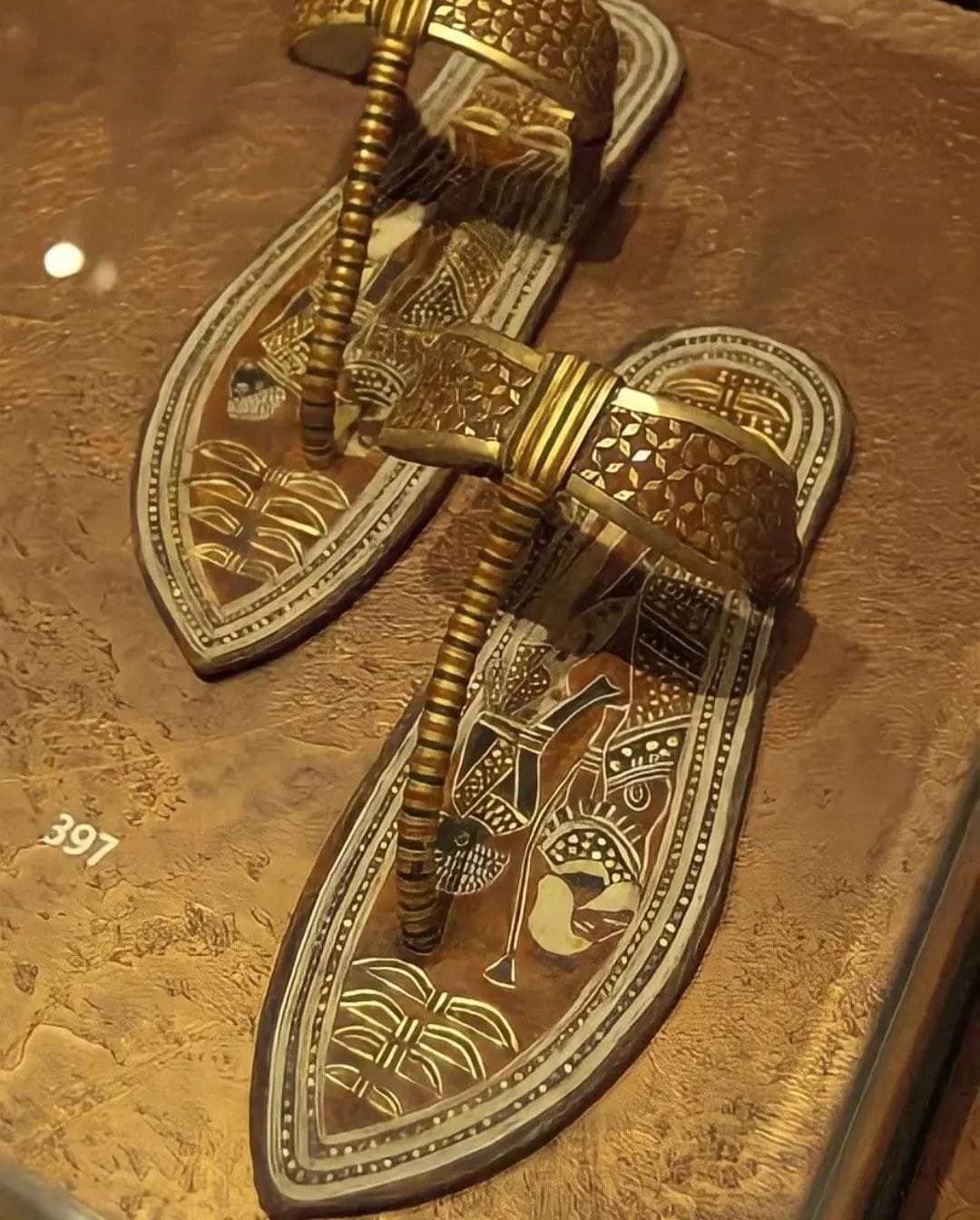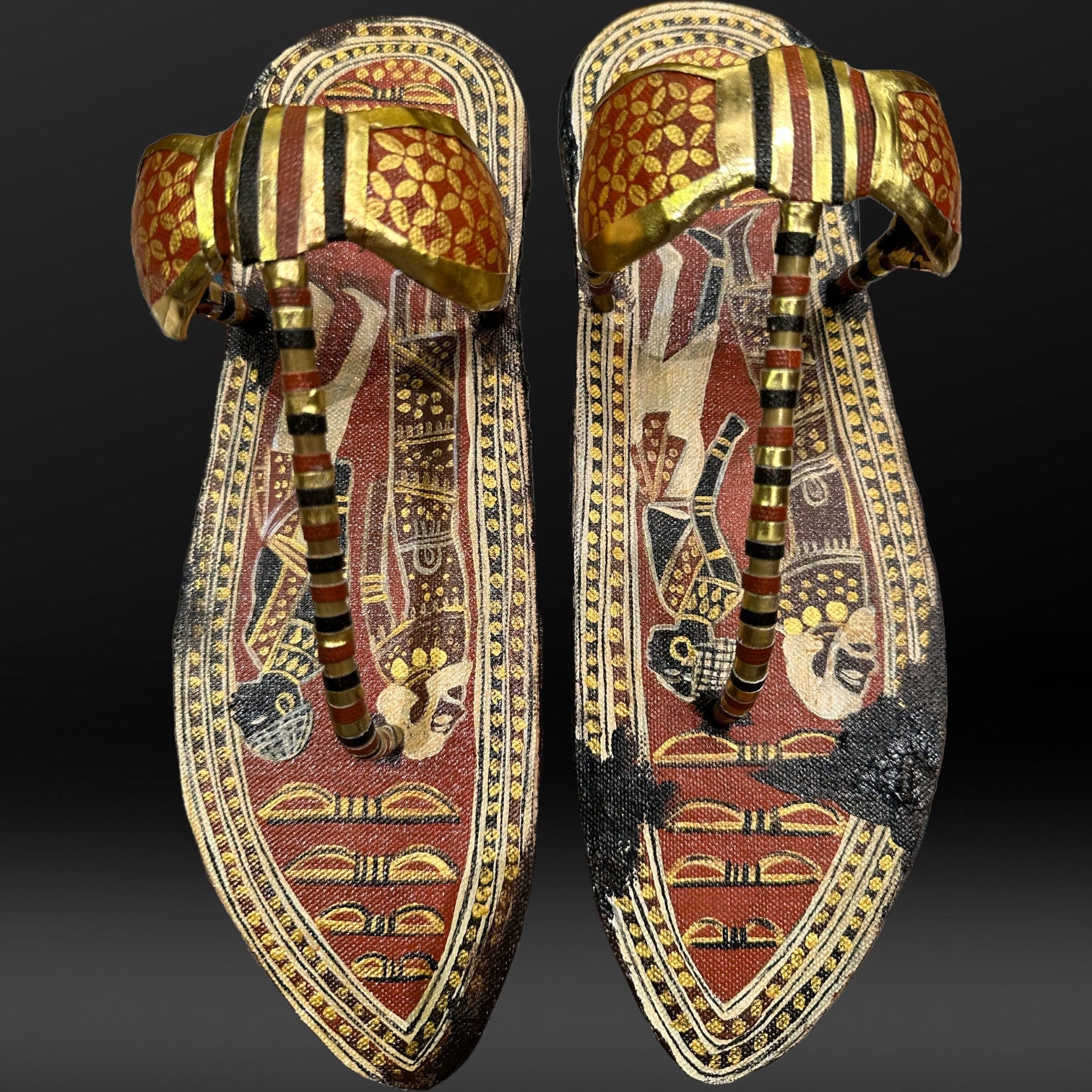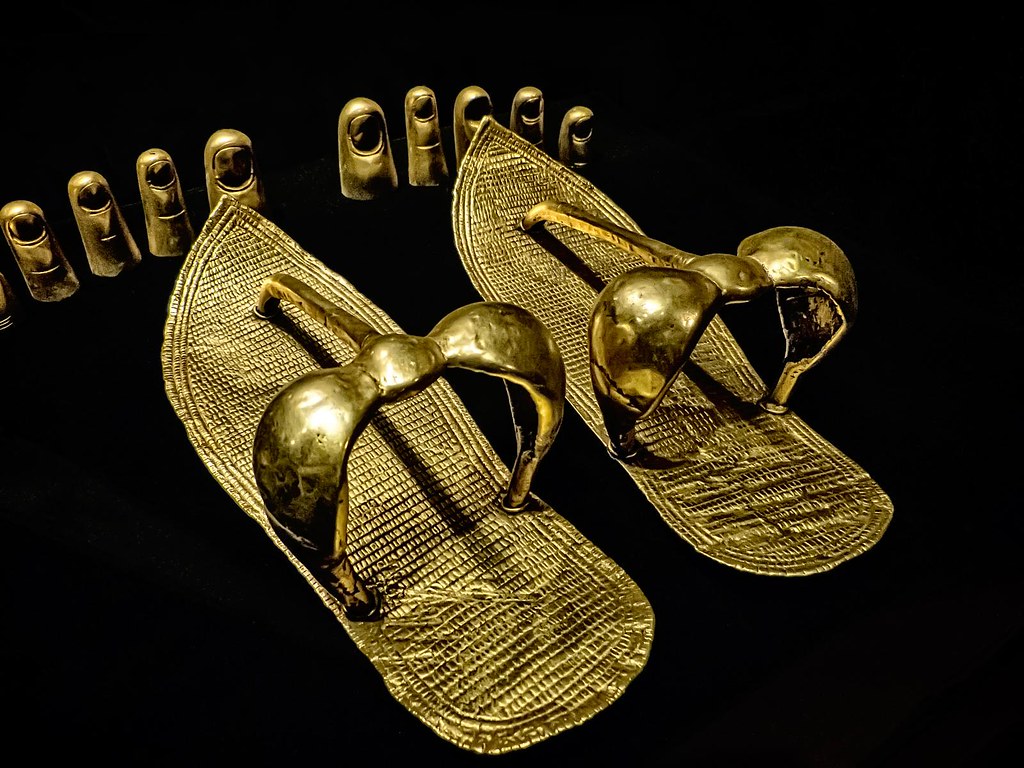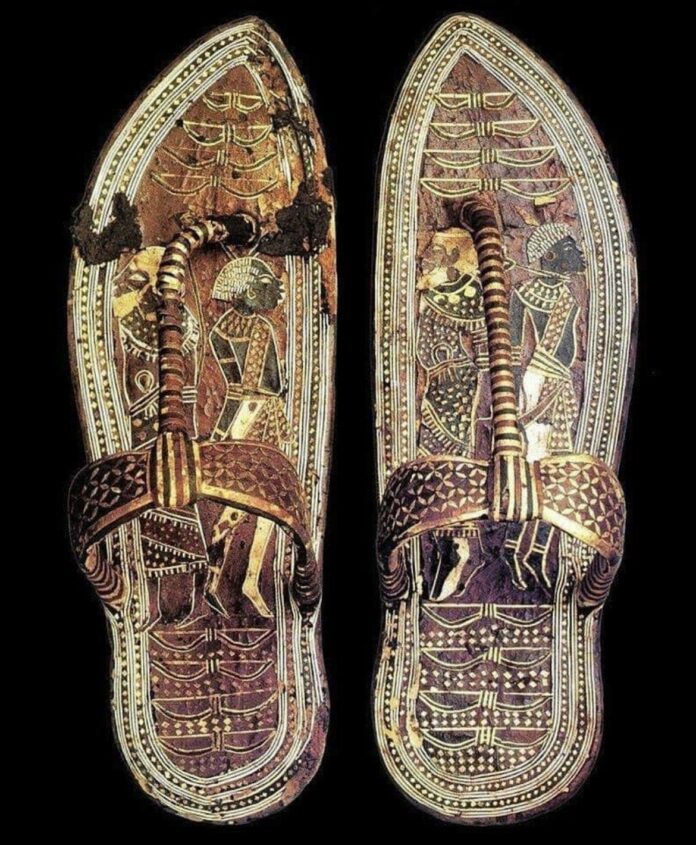The ancient Egyptian civilization has long captivated the world with its remarkable achievements and enduring mysteries. Among the most fascinating discoveries in this realm is the tomb of the young pharaoh, Tutankhamun, which has continued to yield remarkable insights into the practices and beliefs of this bygone era. One particularly intriguing aspect of Tutankhamun’s tomb is the collection of sandals found within, each one adorned with symbolic depictions that offer a glimpse into the king’s power and the cultural traditions of his time.
The Symbolic Sandals of Tutankhamun

Tutankhamun’s reign as pharaoh of Egypt during the 18th Dynasty (ca. 1332-1323 BC) was relatively short-lived, but the legacy he left behind has been nothing short of extraordinary. Among the most remarkable artifacts discovered in his virtually intact tomb are the king’s sandals, which not only served a practical purpose but also held deep symbolic significance.
Leather Sandals with Vanquished Enemies
Perhaps the most striking of Tutankhamun’s sandals are the leather ones, which feature a unique mosaic-like design on the soles. Adorning the bottom of these sandals are depictions of four human figures, representing the pharaoh’s traditional enemies from the Asiatic and African regions. These figures are shown in a prostrate position, with their arms bound behind their backs, symbolizing their subjugation by the all-powerful Tutankhamun.
This symbolic imagery served an important purpose in ancient Egyptian culture. By depicting his enemies beneath his feet, Tutankhamun was able to symbolically trample on them, asserting his authority and dominance over these perceived threats to his kingdom. The sandals, therefore, became a physical manifestation of the king’s ability to conquer and subdue his adversaries, making them a powerful tool in the projection of his regal power.
Golden Sandals for the Afterlife

In addition to the leather sandals, Tutankhamun’s tomb also contained a pair of exquisitely crafted golden sandals, which were discovered adorning the feet of the king’s mummy. Unlike the leather sandals, these golden examples were likely never worn in life, but were instead intended to accompany the young pharaoh into the afterlife.
The presence of these golden sandals speaks to the meticulous attention to detail and the profound beliefs surrounding the afterlife that were central to ancient Egyptian culture. The sandals, which were never meant to touch the physical ground, were essentially a symbolic representation of Tutankhamun’s eternal journey into the next world, where he would continue to reign as a divine figure.
The Significance of Sandals in Ancient Egypt
The discovery of Tutankhamun’s sandals, both the leather and golden varieties, highlights the significant role that footwear played in ancient Egyptian society. Sandals were not merely functional objects but were imbued with deep symbolic meaning, reflecting the beliefs, values, and power dynamics that defined this remarkable civilization.

In the case of Tutankhamun’s leather sandals, the depictions of vanquished enemies served as a visual reminder of the king’s authority and his ability to defend his kingdom against external threats. This symbolism was not only important for the living Tutankhamun but also held significance for the afterlife, where the sandals would continue to represent the pharaoh’s eternal power and dominance.
The golden sandals, on the other hand, were a testament to the importance of the afterlife in ancient Egyptian beliefs. These exquisite artifacts were not meant for earthly use but were instead designed to accompany the king on his journey to the next world, ensuring that he would be properly equipped for the challenges and rituals that awaited him.
Conclusion
The sandals of Tutankhamun stand as a testament to the enduring legacy of this young pharaoh and the rich cultural traditions of ancient Egypt. From the leather sandals adorned with vanquished enemies to the stunning golden examples crafted for the afterlife, these artifacts offer a glimpse into the intricate beliefs, symbols, and power structures that defined this remarkable civilization.
As we continue to unravel the mysteries of Tutankhamun’s tomb, the significance of these sandals remains a captivating subject of study, reminding us of the profound reverence and attention to detail that the ancient Egyptians bestowed upon even the most seemingly mundane of objects. Through the lens of these sandals, we are granted a deeper understanding of the beliefs, values, and aspirations that shaped the lives and afterlives of the Egyptian pharaohs, helping to preserve the enduring legacy of this ancient and influential culture.
